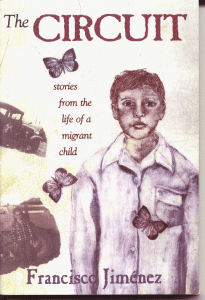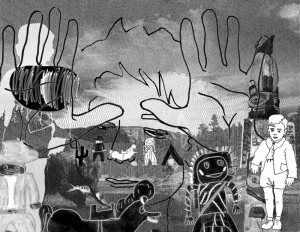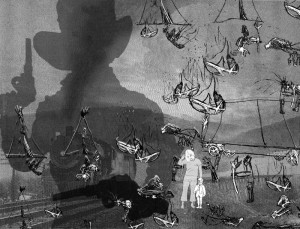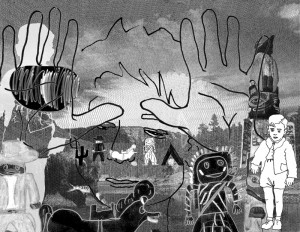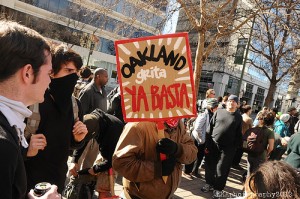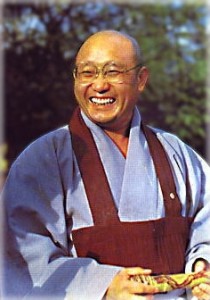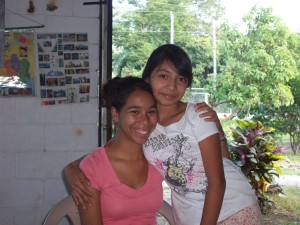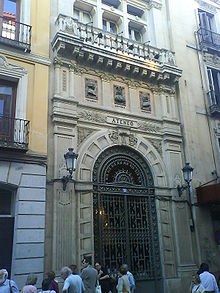During the weekend of April 19-22nd , Santa Clara University hosted the 26th Annual Conference of the Society for the Study of the Multi-Ethnic Literature of the United States (MELUS). I supported the conference by giving a presentation on the work of Francisco Jiménez, a writer and professor from SCU. This is a short version of my presentation:
Given the impact of economic and technological developments on the world and the university, Francisco Jiménez’s books challenge us to think differently in the context of new poverty, globalization, and borders. Jimenez’s unfolding series of autobiographies, specifically The Circuit (1997) Breaking Through (2001) and Reaching Out (2008) are among the most poignant narratives published in the last few years dealing with the experience of an undocumented child migrant farm worker in theU.S. Francisco Jiménez’s books invite readers to understand a set of cultural values that include both sides of the border, and many stories that include the voices of the growing Latino community.
Since Jiménez himself wrote both versions (in English and Spanish) his autobiography of six books in two languages, reminds the reader of the complex picture of the migrant farm worker and the Mexican-American experience of the second half of the twentieth century. The seed to the autobiography was a short story that gives the title to the first installment, Cajas de cartón. This first book was translated as The Circuit, but then, the second book, based on his own experience in high school, was written in English as Breaking Through, which was translated as Senderos fronterizos; the third one was Reaching Out, translated as Mas allá de mí. These six books, based on one single life spent between languages and cultures, and beyond the limitations of a monolingual, mono-cultural life, were written also at the transition of two centuries. To truly grasp the totality of his experience, his work should be analyzed in the following order: Cajas de cartón (short story, 1977, book 2000) and the first installment, The Circuit (1997), then Breaking Through (2001), Senderos fronterizos (2002), Reaching Out (2008) and Mas allá de mí (2009). Looking at the dates of publication we can also see that his work covers nearly four decades of production (from the late 1970’s to 2009), as he is trying to communicate the immigrant experience to different communities in the midst of changing perceptions about immigrants. These books become even more significant given the ideological trends of the late 1980s, the “anti-illegal alien initiative” (Proposition 187) approved byCalifornia voters in 1994, and the most recent SB 1070 inArizona. From the point of view of nation, the bilingual trilogy in part deals with the politics of immigration reform in this country, but in particular, the narratives addresses the economic and legal issues that lie at the heart of the arguments surrounding deportation.
Jiménez’s trilogy shows the reader that assuming that legal discourse is concerned only with the citizens of the nation-state is to ignore the existence and experience of those who are already here, displaced by the economic system that produced the immigrants’ subordination in the first place. Thus, this bi-trilogy is more than the story of an undocumented immigrant child farm worker. Jiménez’s work reminds the reader of the terms by which goods and culture take place in the constant displacement of people in an increasingly global market. The significant emphasis on the economic inequalities and the effects of child labor, shows “the experiences of many children and young adults who confront numerous obstacles in their efforts to ‘break through’” (Jiménez). By shifting lenses and focusing on the decades long economic exploitation of poor farm workers, on child labor and the struggle to “break through,” the reader is challenged to find his/her own language of moral ‘values’ that should underlie contemporary immigration debates.
By reading Jiménez work there is a recognition on the part of the reader of the economic forces at work and the tensions created by poverty around the world and class differences. There is also an acknowledgment of the trauma imposed on poor communities where childhood turns often enough into the institutionalized violence of child labor. The symbol of “la mariposa” (the butterfly), which appears frequently in Jiménez stories, becomes the main image for the metamorphosis that he wished would take place. The butterfly symbol works through a process of integration and “inside out” growth. The caterpillar is at first constrained into a fixed space (the earth, the soil), but eventually becomes a free being, able to open its wings, and fly across the different spaces of his environment. The ‘caterpillar,’ turned ‘butterfly,’ the language of symbols, allow the reader to understand the complex realities unfolding in the immigrant’s life. Jiménez also shows how, from the very moment of their arrival, immigrants carry with them, already fully-formed, a series of “cultural virtues” that grow and positively affect the nation of which they become a part.
Jiménez’s autobiography shows us the hard social and economic conditions faced by undocumented Mexican laborers in California with a new language. Through a poetic style, use of allegory and symbols, and meticulous attention to the emotional and spiritual development of his characters, Jiménez recreates, within the canon of Multi-Ethnic Literatures of the United States, a body of work that strongly questions the ‘illegality’ of their dream. Francisco Jiménez’s bilingual autobiography is an example of the immigrant literary tradition but also, by building a deep sense of empathy for the migrant life in the reader, his books are one of the most original and beautiful testimonials, in the tradition of immigrant literature, of the last fifty years.
Now it’s your turn:
- Do you still believe in your abilities to achieve your dreams?
- Do you have a sense of your own “break throughs”?
Take a few moments to breathe in and breathe out—realize the many moments when you have felt the uniqueness of your own story. Take a few minutes to write about it.

